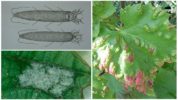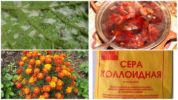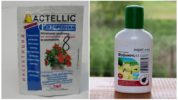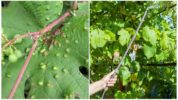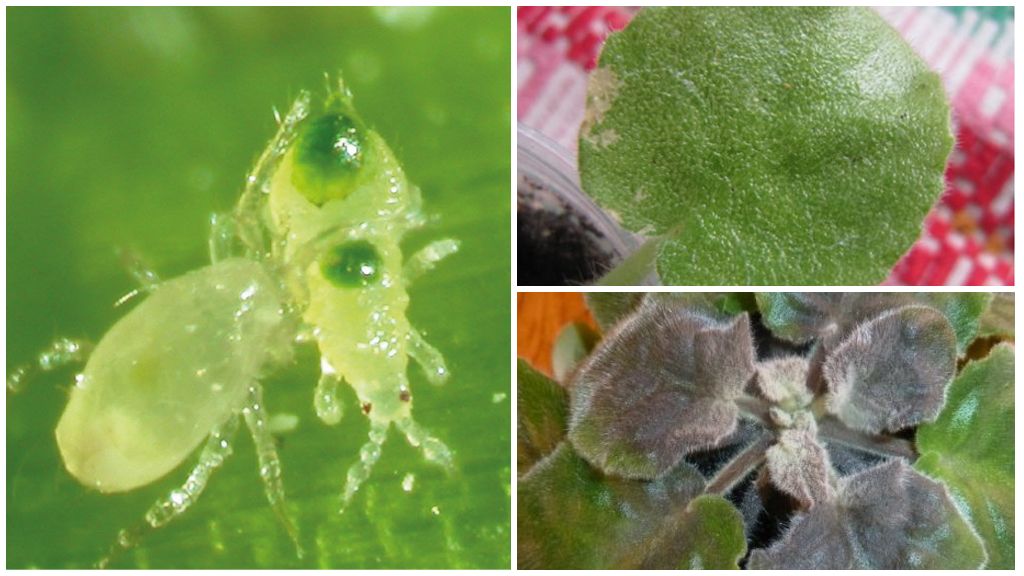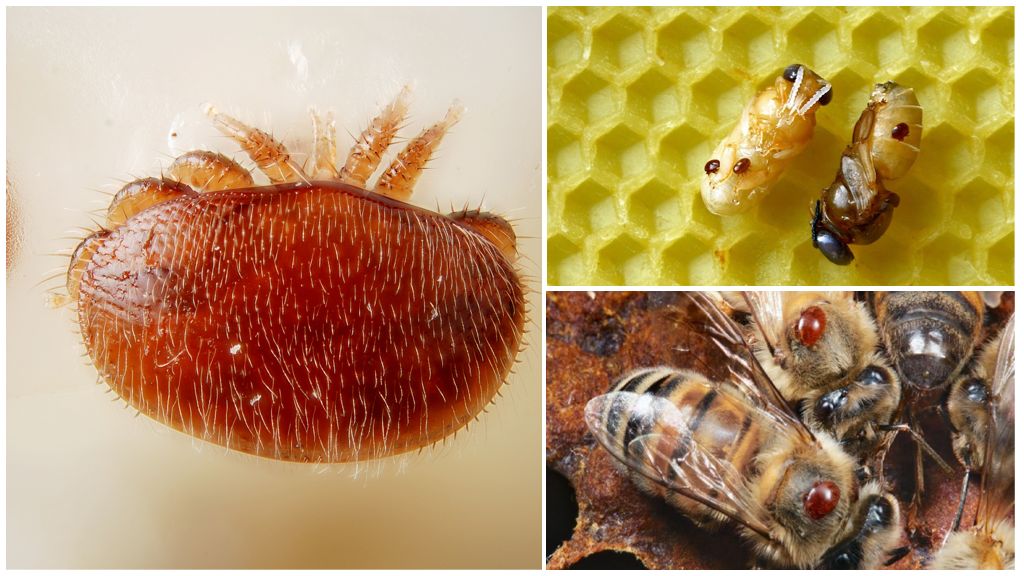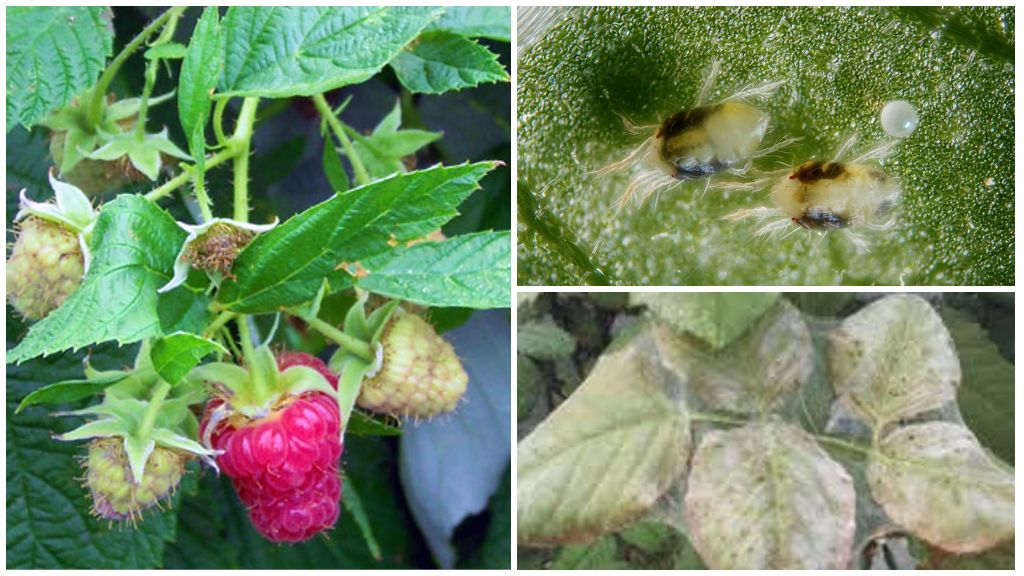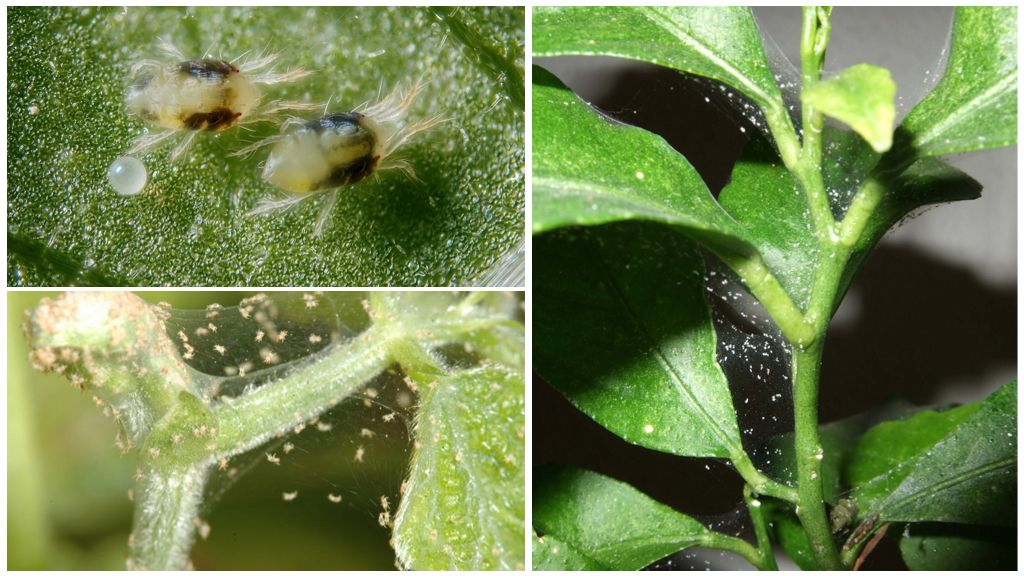- Grape tick
- Traditional methods of combating grape mites
- Grape Tick Chemicals
- Grape tick
The tick is a type of spider mite, a common pest for many plant crops. The name "spider web" was given to a tick for its web, with which it entangles the leaves of plants. There are so many types of ticks, and each of them prefers to dwell on certain cultures. To save the vineyards, you need to know the methods of combating grape mites.
On a note!
The spider web representative can have a bite of anything, but he has special eating habits. Different types of this tick specialize in "their" plants. Its closest relative, the grape pest, actively absorbs grape leaf juice, causing irreparable harm to its garden.
Pest Summary
The grape leaf mite is a microscopic creature of the arachnid order. Its dimensions do not exceed 0.2 mm. Body color can vary from light beige to tan. In the summer, the pest has small growths on the body, and in the winter there are no growths.
To accurately identify which parasite is wound on the grapes, you can see a photo of the tick. The female has a body size much larger than the male. She begins her activity in the spring, laying eggs.
On a note!
For the entire period until the middle of summer, one individual is able to give 4-5 generations, and in a favorable climate this figure can reach 10.
Of the eggs laid on the back of the plant leaf, after 7-10 days, nymphs appear - a transitional form of the larva. At this stage, the tick is located for about 2 weeks, after which the larva turns into an adult. Throughout the summer period, she eats the sap of plants, moving from one leaf to another. With the onset of autumn, ticks are looking for a secluded place for wintering. It can be:
- fallen foliage;
- cracks and crevices under the bark;
- cracks under the scales of the kidneys and other places where you can hide from the cold.
Like all kinds spider mite, a grape pest, waking up from hibernation, immediately climbs onto the lower young spring leaves of grapes and begins its harmful activity.
Signs of grape tick infection

To determine if there are pests on the grapes, you need to carefully examine the bush. A grape leaf mite prefers to feast on the lower leaves on the back side. A characteristic thin white film appears on the leaves - a web. On the web and next to it, you can see small moving points. They are parasites.
Important!
Yellow spots appear on the grape’s mite lesion sites. The shape of the sheet becomes more carved and curly. Sucking the juice of leaves, the tick moves to a new fresh leaf. Withered leaves fall over time. Because of this, the normal process of photosynthesis of the whole plant is disrupted. The yield of grapes is reduced by 30 - 50%. In advanced cases, damage can acquire a large scale, which will lead to the death of the plant.
There are several types of pests of grapes:
- An ordinary leaf mite specializes in sucking juice from grape leaves. He begins to eat the lower leaves of the bush, gradually moving higher to the upper branches and vines. Disease of the vineyard with this parasite poses a great risk of losing most of the crop.
- An itchy felt mite is also found on the bottom of grape leaves. He gnaws a recess, which closes on top with a cream-colored spider web. Gradually, all the foliage becomes stained with a felt-like coating, which darkens over time. Grape greens dry and fall down. In addition to the grape parasite, there are nut felt mites and other species.
- Kidney tick - a dangerous pest of the delicate buds of the plant. Damaged rudiments of leaflets lead to a state of grape disease. The correct formation of foliage is disturbed, and the plant is not able to produce crops. Often starts currant bud.
Traditional methods of controlling grape pests
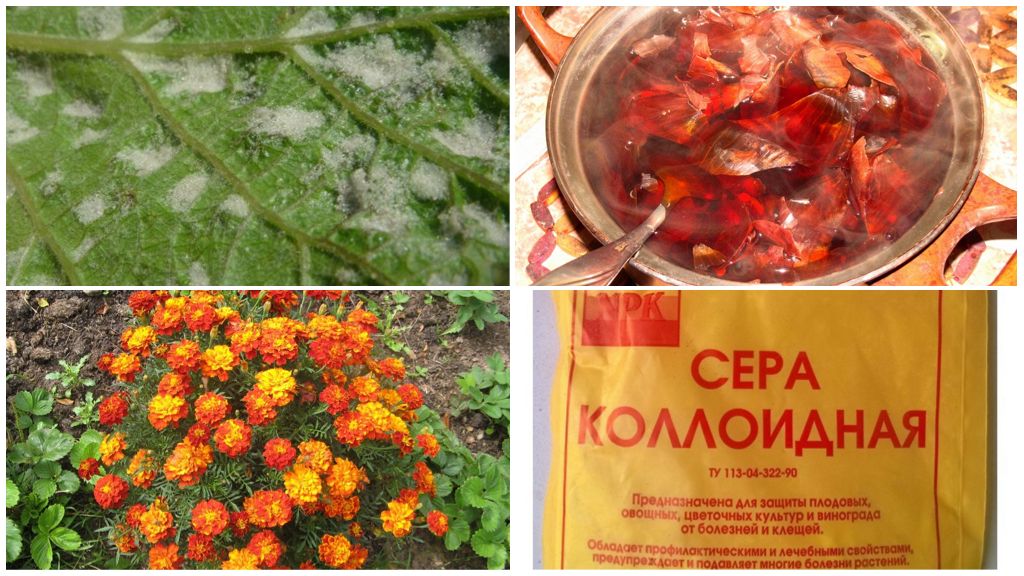
Viticulture is a very laborious and costly task. To be successful in growing this crop, you must always take measures to combat parasites in time. The fight against felt mites on grapes and other types of this pest should be started with gentle methods. These include various folk recipes using natural ingredients:
- Infusion of onion husks is a universal method of dealing with many harmful guests of the garden. To prepare it, you need to pour onion husk with pure water and leave to infuse for 3 days. Spray the grapes from the tick with the resulting solution and process the plant stem.
- Marigolds are a natural repellent for many pests. For the infusion, you will need half a bucket of dried inflorescences to fill in with 10 liters of warm water and leave for 48 hours. Grape processing is carried out late in the evening. Spraying can be done using a broom, moistening it in a bucket and spraying the infusion throughout the bush.
- To process grapes from a tick, you can use a 75% solution of colloidal sulfur. This is a fairly effective tool that can be used at home. It is necessary to spray grapes with sulfuric solution only in very hot and dry weather of more than 30 degrees Celsius. Only under such conditions will the efficiency be high.
- Soap solution can be called universal in the fight against many garden pests. To prepare it, you need to grate and dissolve 30-50 grams of laundry soap in 10 liters of water. Spray grape leaves with soapy liquid at any time during the growth of the plant.
The use of chemicals
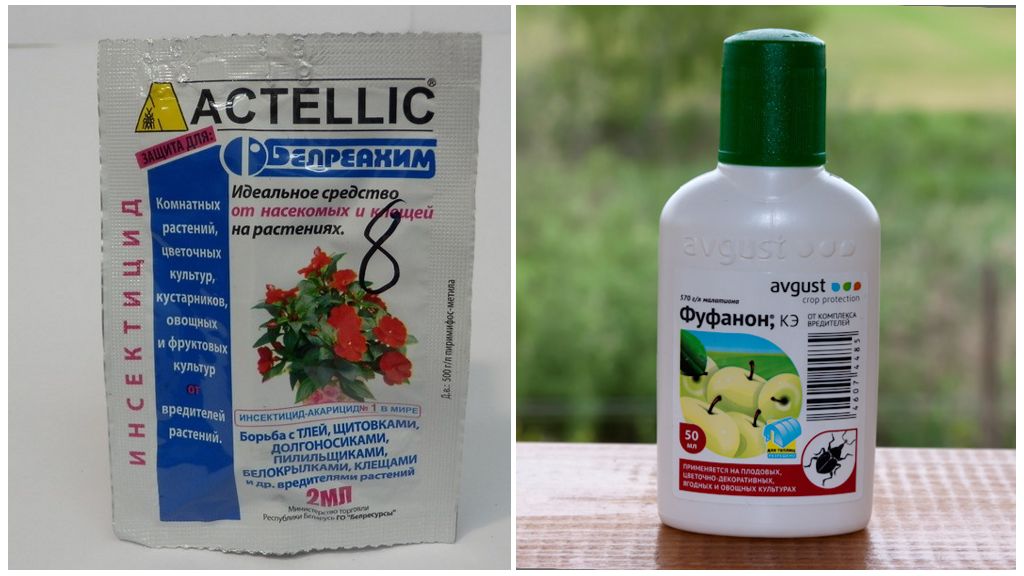
In addition to the struggle with folk remedies, there are more radical ways to get rid of the spider parasite. If pest infection has reached a large scale, chemical preparations should be used. Before you deal with a spider mite on grapes, you need to remember that any chemical treatment should be carried out strictly before the plants bloom.
Important!
During treatment with any chemical solution, the use of personal protective equipment is required: gloves, a respirator, protective clothing. Throughout the procedure, it is forbidden to smoke, take food, drinks.
Chemical mite preparations purchased on grapes will help solve a serious problem. The most popular and effective include:
- Actellik is a powerful organophosphate remedy for ticks on grapes. It is allowed to apply only in advanced cases. The contents of one ampoule of 5 ml are diluted in five liters of water and the bushes are sprayed with the resulting solution. Leaf treatment should be carried out in the early morning until 10 o’clock or in the evening after sunset. The price of a package with one ampoule is 45 rubles, a bottle of 50 ml - 400 rubles.
- Fufanon will help get rid of a tick on grapes. The insecticide effectively destroys the parasite when spraying the bushes with strong pressure.The solution is prepared according to the instructions: 13 ml of Fufanol is diluted in a bucket of water. The consumption per plant is about 2 liters of the resulting working solution. One liter of Fufanon will cost 500 rubles.
- As a protection of grapes from ticks, you can use the drug Demitan. It is an acaricide produced in the form of a concentrated suspension. Low toxicity for bees and beneficial insects. Demitan's effectiveness has been proven for 40 days. Method of solution preparation: 0.24 - 0.36 L per 600 - 1000 L of water for processing 1 hectare of plantings. One liter of the drug costs about 6 thousand rubles.
- Neoron - Pin acaricide against ticks. Effectively destroys the parasite at all its stages of development. Consumption: 12-15 ml per 10 liters of water for processing 100 m2 of vineyard. Spray the leaves of the bushes strictly before flowering or after. Wetting the sheet should be sufficient, but so that the solution does not drain. The cost of one ampoule with a volume of 12.5 ml is about 100 rubles. Similarly, against ticks Anti-tick, Tick-borne.
Reviews
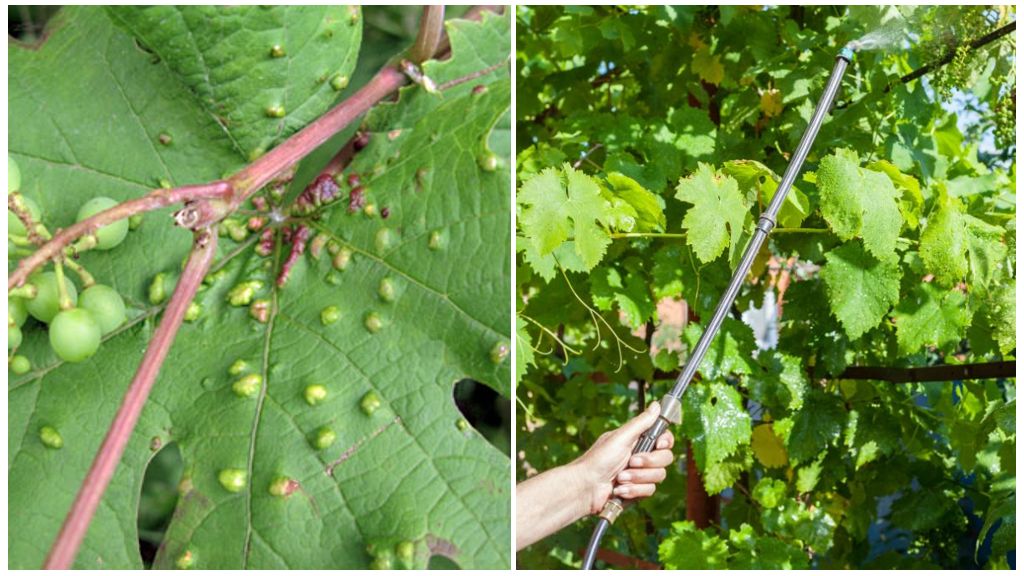
I have been using Actellic for several years. Good insecticide at an affordable price. I used to try to get by with folk methods. But when there were too many ticks, I realized that drastic measures were needed and acquired this drug. With it, it turned out to get rid of pests in one application.
Alexey, Volgograd
My aunt in the Krasnodar Territory has her own house and grapes grow in her yard. Once, in the summer, I visited there. Every day I watched her caring for her landings. And once I became an eyewitness of how grapes are processed from pests. Aunt on a grater rubbed a piece of laundry soap and dissolved it in water. The resulting solution was used to spray bushes. And judging by the good grape harvest every year, this method spider mite protection works.
Violetta, Krasnodar
Prevention of infection with grape tick
There are a few simple rules that can be used to reduce the risk of infection of grapes with a spider mite.
- The easiest way to prevent any disease of the plant is to check it weekly. This protection option is only suitable for small gardens.
- Be sure to inspect new seedlings brought from other areas.
- For preventive purposes, you can plant onion, garlic, marigold between rows of grapes. These plants are natural repellents for many types of parasites. Conversely, you need to remove weed grass around the vineyards.
- In autumn, a mandatory procedure should be cleaning the garden from fallen leaves and dry grass.
- An important step in the protection of vineyards is digging the soil around the trunk. This procedure is recommended to be carried out in the fall and in the spring.
When performing simple activities in the garden, the volume and quality of the harvest will always delight the gardener.
